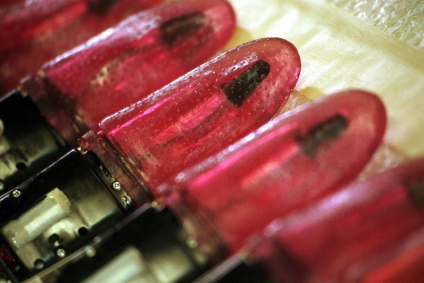Sex Question Friday: Can You Get An STI From Sharing A Sex Toy?
June 10, 2015 by Justin Lehmiller
A reader submitted the following question:
“Is it safe to share sex toys with other people as long as you clean them up well, or do you still need to worry about sexually transmitted diseases?”
Thanks for this great question! Sexual health experts typically advise people to clean vibrators and other sex toys thoroughly before and after sharing them; however, until recently, no one had ever studied whether this advice was sound. That is, does cleaning a shared sex toy between uses really make it safe? According to a recent study, it’s not as safe as you might think [1].
In this study, 20 women aged 18-29 (all of whom reported having previously had both male and female sexual partners) were each given two brand new vibrators to use during masturbation. Each vibrator had a different design and was made of a different material. Here’s the description from the article itself:
“Vibrator 1 was a typical ‘Rabbit’-styled vibrator, in that it included a vibrating shaft for vaginal insertion and an arm for clitoral vibration, each composed of a soft jelly based thermoplastic elastomer material. Vibrator 2 was smooth surfaced, composed of a soft silicone material.”
The women were asked to use the vibrators inside their vaginas on separate occasions that were at least one day apart. After using each vibrator, participants were asked to clean it with water, as well as a commercially available sex toy cleaner they were provided with.
What the researchers wanted to do was test whether one specific STI, the human papilloma virus (HPV), was present on the vibrators after being used by infected women. They chose to look at HPV because it is among the most prevalent STIs in the world. Each woman was asked to submit a vaginal swab to allow for testing of their HPV infection status. In addition, they were asked to take swabs from different parts of the sex toys immediately after use, right after cleaning, and one day after cleaning.
Of the women who provided vaginal swabs, 75% tested positive for HPV. The swabs from the infected women’s vibrators were then tested for presence of the virus. For both types of vibrators, HPV was detected on the majority of samples (more than two-thirds) immediately after use. Among the samples collected right after cleaning, HPV was less likely to be detected, but it still showed up about half of the time on the shaft of both the Rabbit-style (56% of samples) and silicone vibrators (44% of samples).
Perhaps most surprising of all was that 24 hours after cleaning, HPV was still detected on 40% of the samples obtained from the shaft of the Rabbit-style vibrator. In contrast, HPV wasn’t detected at all on the silicone vibrator the following day.
These findings reveal that HPV at least has the potential to be transmitted via shared sex toys. The greatest risk would likely be when partners share sex toys during the same sexual event without cleansing it; however, it appears that there is still the potential to spread HPV even after using a specialty cleaner and perhaps even if the same toy is used by different individuals on different days.
These results also suggest that some types of sex toys may pose more STI transmission risk than others. In particular, toys made of a thermoplastic material may be riskier to share than toys made of silicone, perhaps owing to differences in how effectively these substances can be cleaned–more research is need to confirm this, though. More research is also needed to determine whether other STIs beyond HPV have the potential to be transmitted via shared sex toys as well.
Thus, to answer your question, cleaning sex toys before and after sharing them with others is definitely advisable; however, the available research suggests that you should be cautious when sharing sex toys. If you’re going to share them, it is likely that, in addition to cleaning, using condoms or other barriers would potentially increase your level of protection.
For past Sex Question Friday posts, see here.
Want to learn more about Sex and Psychology? Click here for previous articles or follow the blog on Facebook (facebook.com/psychologyofsex), Twitter (@JustinLehmiller), or Reddit (reddit.com/r/psychologyofsex) to receive updates.
[1] Anderson, T. A., Schick, V., Herbenick, D., Dodge, B., & Fortenberry, J. D. (2014). A study of human papillomavirus on vaginally inserted sex toys, before and after cleaning, among women who have sex with women and men. Sexually Transmitted Infections.
Image Source: iStockphoto

Dr. Justin Lehmiller
Founder & Owner of Sex and PsychologyDr. Justin Lehmiller is a social psychologist and Research Fellow at The Kinsey Institute. He runs the Sex and Psychology blog and podcast and is author of the popular book Tell Me What You Want. Dr. Lehmiller is an award-winning educator, and a prolific researcher who has published more than 50 academic works.
Read full bio >


